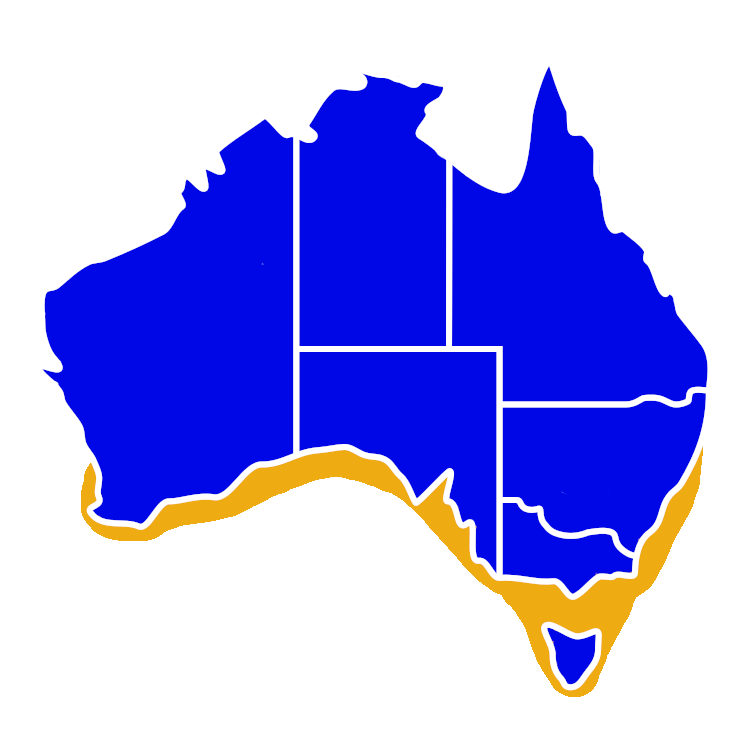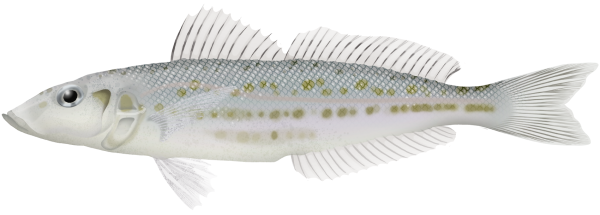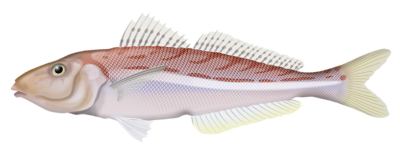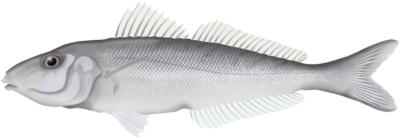Quick Facts
Distribution

Interesting Info
- King George Whiting can be found along the southern coastline from Shark Bay in Western Australia, around the southern coast of South Australia, Victoria, and up pass Jervis Bay in New South Wales.
- These fish have a slender and elongated body shape, with a slightly compressed profile. They have a single long dorsal fin and a small mouth positioned at the end of their snout.
- King George Whiting are sexually dimorphic, meaning males and females have different physical characteristics. Males tend to be larger and more brightly coloured than females. They have a silver-grey body with distinct dark bands or spots along their sides.
- They have a diverse diet that includes small crustaceans, molluscs, worms, and small fish. They use their small, downward-facing mouth to probe the sandy or muddy substrate in search of prey.
- Like most whiting, they are primarily found in coastal marine environments, including sandy or muddy bottoms, seagrass meadows, and near rocky reefs.
- The King George Whiting is highly regarded not only for its sporting value and culinary qualities but also for its ecological role. As an important predator in coastal ecosystems, it helps regulate the populations of smaller fish and invertebrates, contributing to the overall health and balance of the marine environment.
- Breeding for King George Whiting typically occurs during the summer months, from November to February. They are oviparous, meaning they reproduce by laying eggs. The eggs are released into the water, where they float until they hatch.
- In addition to their commercial and recreational value, King George Whiting play an important role in Aboriginal culture. They have been a significant food source for Indigenous communities for thousands of years, with traditional fishing techniques and cultural practices associated with their harvesting and preparation.
- Their estimated average lifespan is between 10 – 12 years.
Species Interaction
Recreational Fishing, Snorkeling & Diving
King George Whiting are highly popular among recreational anglers in Australia due to their challenging nature, delicious flesh, and accessibility along the southern coastline. Their delicate, white flesh is highly prized, appealing to those who enjoy catching their own fresh seafood. For snorkelers and divers, observing them in the wild can be a rewarding. They are known to be relatively unafraid of humans and often curious, allowing for close encounters.
Scientific Classification
Kingdom: Animalia
Phylum: Chordata
Class: Actinopterygii
Order: Perciformes
Family: Sillaginidae
Genus: Sillaginodes
Species: Sillaginodes Punctata
Conservation Status
In terms of conservation status, the King George Whiting is currently listed as “Least Concern” in Australia. However, sustainable fishing practices are important to ensure the long-term viability of their populations.
Fish Taste Quality
The King George Whiting is highly regarded for its culinary qualities and is considered excellent for eating. They are prized for their delicate, sweet, and white flesh, which has a low oil content. The meat has a mild flavour that is often described as succulent and is highly sought after by seafood lovers.
Taste Rating: 5/5
How to catch
King George Whiting
Catch Difficulty: Intermediate
Tackle: Running Sinker Rig, Artificial Rig
Bait: Fresh cut flesh baits, Lures, Pilchards, Prawns, Squid, Worms, Yabbies, Soft plastics
Technique: Keep bait on the bottom
Popularity: Highly targeted
Recreational Viewing
- Snorkeling & Scuba
Finding: Intermediate
Temperament: Peaceful
Location: Inner Reef, Lagoon, Seagrass Beds, Sandflats
Danger: None





